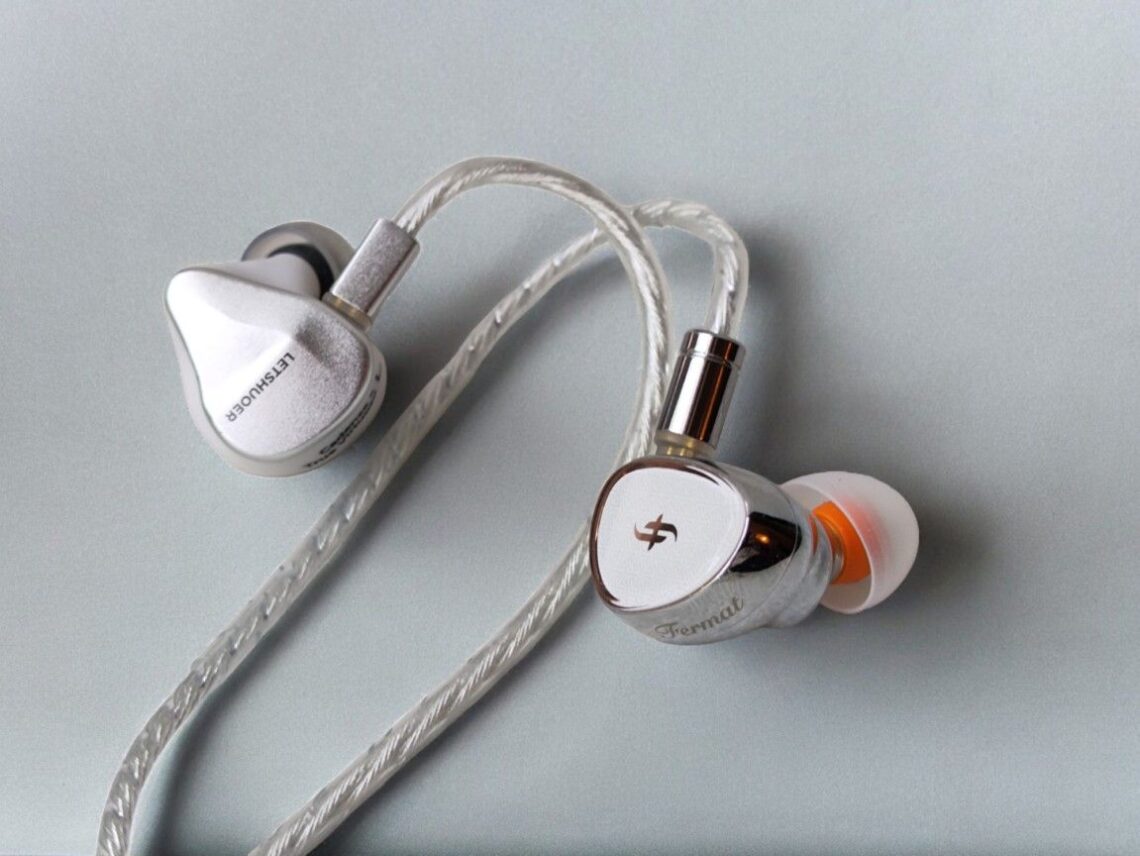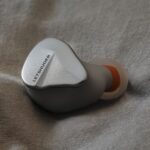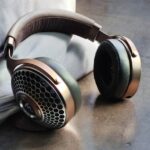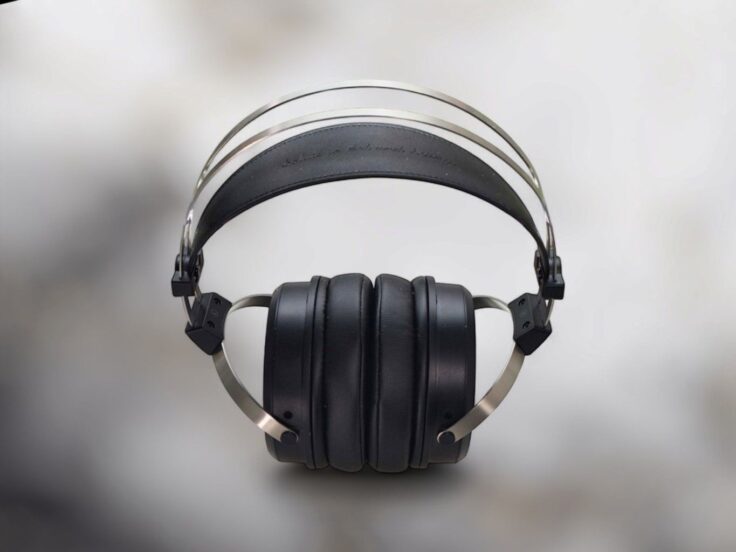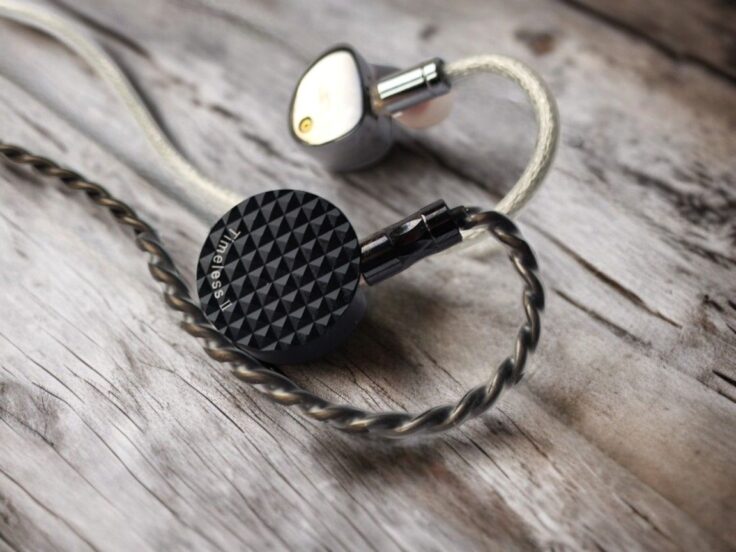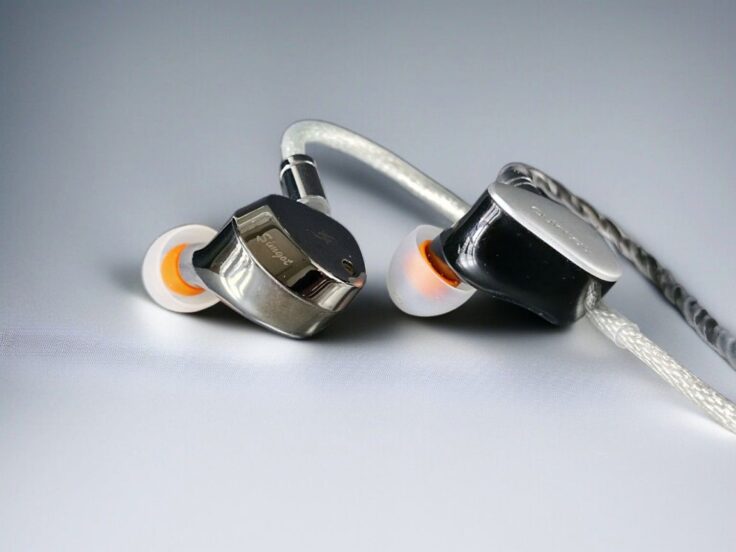The Simgot EA1000 and the Cadenza 4 are two similarly priced IEMs at 220-250 USD. They both offer great sonic qualities, but they have some notable differences.
They are also quite different in terms of acoustic design. The EA1000 is a single dynamic driver earphone with a passive radiator; the Cadenza 4 is a quad hybrid featuring one dynamic driver and three balanced armature drivers.
With regards to other technical aspects, they are also quite different. The EA1000 is made of metal with interchangeable nozzles; the Cadenza 4 is all 3D-printed resin. The EA1000 is smaller; the Cadenza 4 is lighter.
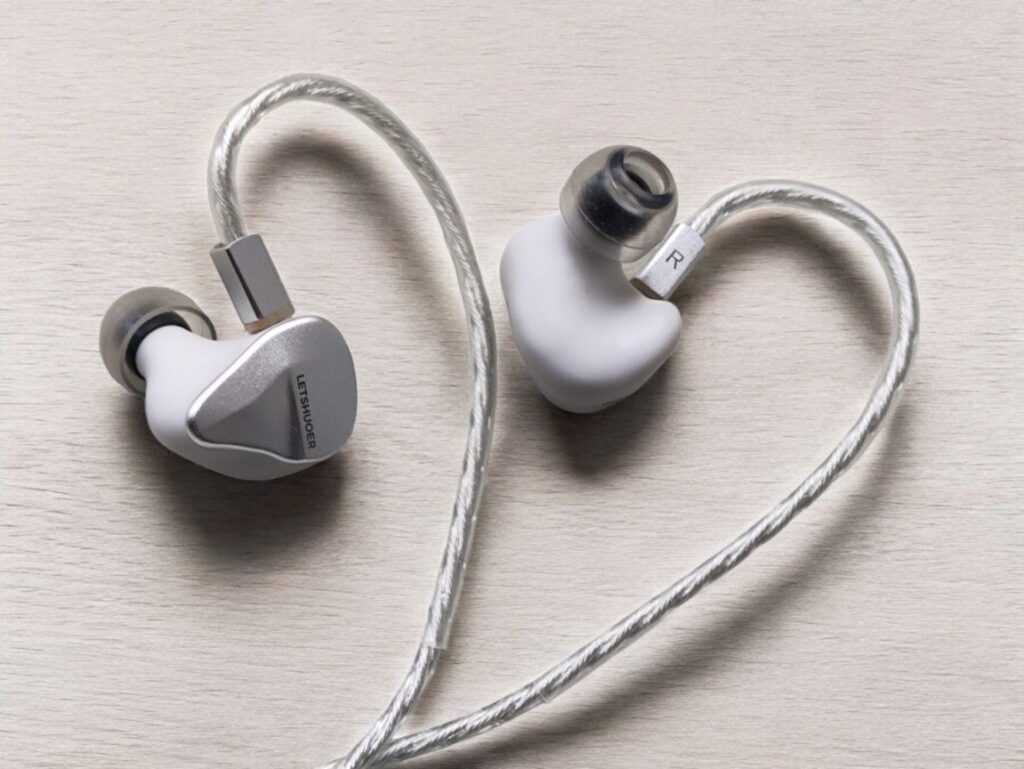
LETSHUOER CADENZA 4 SPECIFICATIONS
- Wired In-Ear Monitor
- Driver: 10mm beryllium coated DD, 1 Sonion BA, and 2 Knowles BA
- Impedance: 15 ohms
- Sensitivity: 102 dB
- Frequency Response: 20Hz – 40kHz
- Chassis Material: 3D-printed resin, anodized aluminum faceplate
- Cable: 1.2 m, 392-strand silver-plated monocrystalline copper
- Earphone connectors: 0.78 mm dual pin
- Audio Connectors: 90-degree angled 2.5mm, 3.5mm, and 4.4mm interchangeable connectors
Check the current price here:
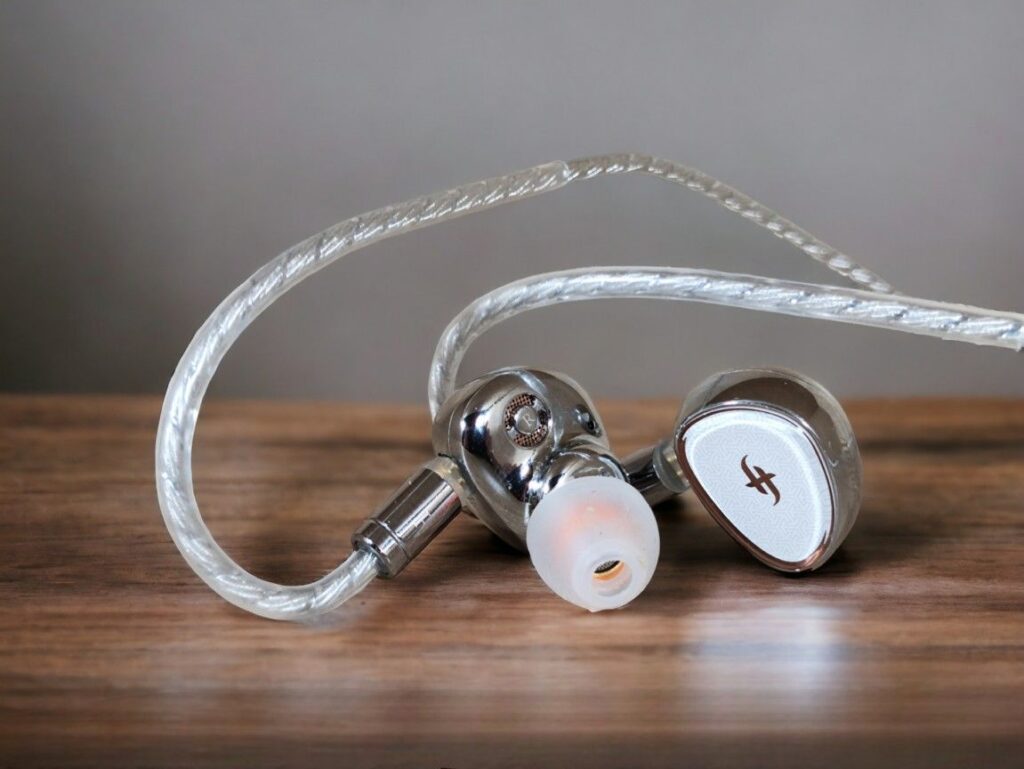
SIMGOT EA1000 SPECIFICATIONS
- Driver: 10mm Dual-Magnetic & Dual-Cavity Dynamic Driver
- 6mmPassive Radiator
- Diaphragm: Multi-Layer Sputter Deposition Purple-Gold Diaphragm
- Impedance: 16 Ohms ±15% (@1kHz)
- Sensitivity: 127 dB/Vrms (@1kHz)
- Frequency Response: 10Hz-50kHz
- Effective Frequency Response: 20Hz-20kHz
- Detachable Cable: 120 cm Silver-Plated OFC Litz Cable
- Earphones connector: 0.78mm 2 pin
- Cable termination: 3.5mm
- 3 pairs of tuning nozzles included
Check the current price:
- Linsoul: Simgot EA1000
- Amazon: Simgot EA1000
TUNING OPTIONS
For this comparison, I used the SpinFit CP145 on the EA1000 and the AZLA SednaEarFit Crystal on the Cadenza 4. As I have found that the Cadenza 4 is especially sensitive to tips rolling, I did a second round with the CP145 on the Cadenza 4. I have commented on my findings at the end of this comparison. Basically, the CP145 tips give the Cadenza 4 more bass, but still less than the EA1000.
The EA1000 has tuning nozzles that impact the sound. I used the golden brass nozzles, which I find to be the best all rounder for the EA1000. You can read more about the nozzles in my EA1000 review here.
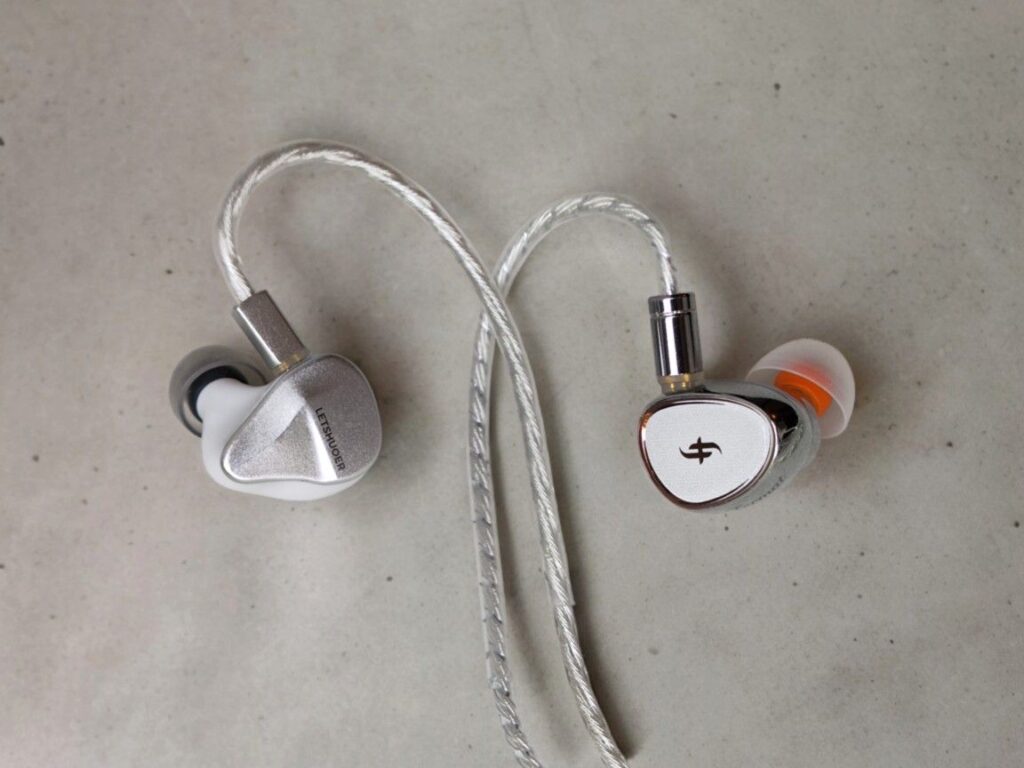
LISTENING IMPRESSION
Associated equipment: Topping A90 as an amplifier and the RME ADI-2 DAC FS. The RME sounds excellent by itself, but it’s more practical for me to use the Topping.
In The Mountains by Espen Eriksen Trio
Cadenza 4: Starting out with a nice jazz Trio. The standing bass is polite in weight but I think it is excellent, with great definition and enough presence for me. The piano is very clear yet has a good amount of body. The percussion is beautiful, and the treble is effortless. The imaging is superb, and the soundstage is generally very wide.
EA1000: The bass is much stronger, but it sounds great with nice definition and a very tactile and three-dimensional feel to it. The soundstage feels more open and roomier than with the Cadenza 4.
Jambi by Tool
Cadenza 4: The guitar riffs are very nicely textured without being edgy. The bass is not overly powerful, but nicely balanced and with great definition. The vocals stand out in the mix. It sounds very effortless and quite spacious.
EA1000: The bass is more dynamic, and the vocals are even better separated from the rest. There’s an occasional hint of sibilance, though. Otherwise, it sounds pretty great.
Smile by Pearl Jam
Cadenza 4: The bass quantity is good, and the bass is rendered with great definition. The separation of instruments is very satisfactory, and you can easily identify what is going on on this rather busy track. Eddie Vedder’s vocals stand out clearly and is rendered without sibilance.
EA1000: It sounds a bit more crowded than the Cadenza 4. Otherwise, they are quite similar, but the EA1000 has more thump in the bass and feels slightly more dynamic.
Black Crow by Cassandra Wilson
Cadenza 4: The imaging and separation are both very good; there is a good sense of depth and spaciousness. The vocals are in the center of attention, but the bass drum is also very present.
EA1000: The bass is fuller and has some resonance that makes it sound extra roomy with a slightly booming character. The vocals are clear and present.
Some Day My Prince Will Come by Coryell-Coryell-Vitous
Cadenza 4: Very balanced presentation. Everything is well-behaved and enjoyable.
EA1000: Sounds very organic, dynamic, and spacious. The bass is fuller and the guitar is warmer. It sounds more roomy.
Desert Island Disk by Radiohead
Cadenza 4: The guitar is crisp, and the bass is pulsing nicely underneath. Thom Yorke’s vocals are brought to the front in an excellent manner.
EA1000: This also sounds very good, but with more bass presence. There is a slightly crisper character to the sound.
As Before by Olga Konkova
Cadenza 4: The cajôn is punchy, but the piano gets the focus, like it should. The female vocals are absolutely wonderful, as is the piano, which sounds natural and organic, effortless, and clear without sharp edges.
EA1000: There’s more bass presence, a higher sense of reverb, and spaciousness. Slightly crisper yet warm and nice sounding.
It Could Be Sweet by Portishead
Cadenza 4: The female vocals are perfectly rendered, clear, and natural; there is not a hint of sibilance. The bass is present with great control and authority, but not overly dominant.
EA1000: The bass is fuller but also less precise. Again, there is a bigger sense of space and a crisper tonality.
Brahms’ Symphony No. 2 III by Paavo Järvi
Cadenza 4: The kettledrums are tactile, and the bass goes deep. The strings and wind instruments are beautifully rendered. The separation is excellent, and even though there is good space between the instruments, they are rendered with a good amount of body and presence.
EA1000: It sounds bit crisper, but still great.
Young Vivaldi’s Violin Concerto RV 813 III by Ensemble Modo Antiquo
Cadenza 4: The strings are absolutely terrific sounding. They have bite and attack, but at the same time, they have a rounded and organic feeling. There is no harshness, but they’re not laid back either.
EA1000: Sounding quite similar, but slightly more energetic because of more presence in the upper mids and a crisper treble.
Summer 3 – Vivaldi Recomposed by Max Richter
Cadenza 4: A very coherent and nice presentation. Everything is well balanced; there’s plenty of detail and nice imaging.
EA1000: At the same time it feels clearer and more diffuse. I think there’s some resonance that’s at play here, making the EA1000 not handling the lower midrange too well; it sounds way more crowded than with the Cadenza 4.
Limit to Your Love by James Blake
Cadenza 4: Blake’s vocals are clear and crisp. The bass is really excellently rendered, and the subbass is very present. I don’t need more bass than this.
EA1000: The EA1000 has more bass quantity, but it’s very well behaved. There’s a higher sense of space and a crisper tonality. The vocals, however, are less upfront than with Cadenza 4.
EAR TIPS
As mentioned previously, the Cadenza 4 is especially susceptible to tip-rolling, and for this comparison I used my favorite, which is the wide bore Azla SednaEarFit Crystal. However, my standard general go-to tip, the SpinFit CP145, also works very well.
On the Cadenza 4, CP145 gives significantly more bass than the Crystal tips. I did a brief second round of comparisons with the Cadenza 4 using the CP145s, and even though the bass increases and the sound in general is affected, the differences I have described between the EA1000 and the Cadenza 4 are basically the same.
I use the CP145 on the EA1000, which I slightly prefer over the Crystal tips, but the EA1000 not so that sensitive to tip-rolling and the difference is relatively subtle.
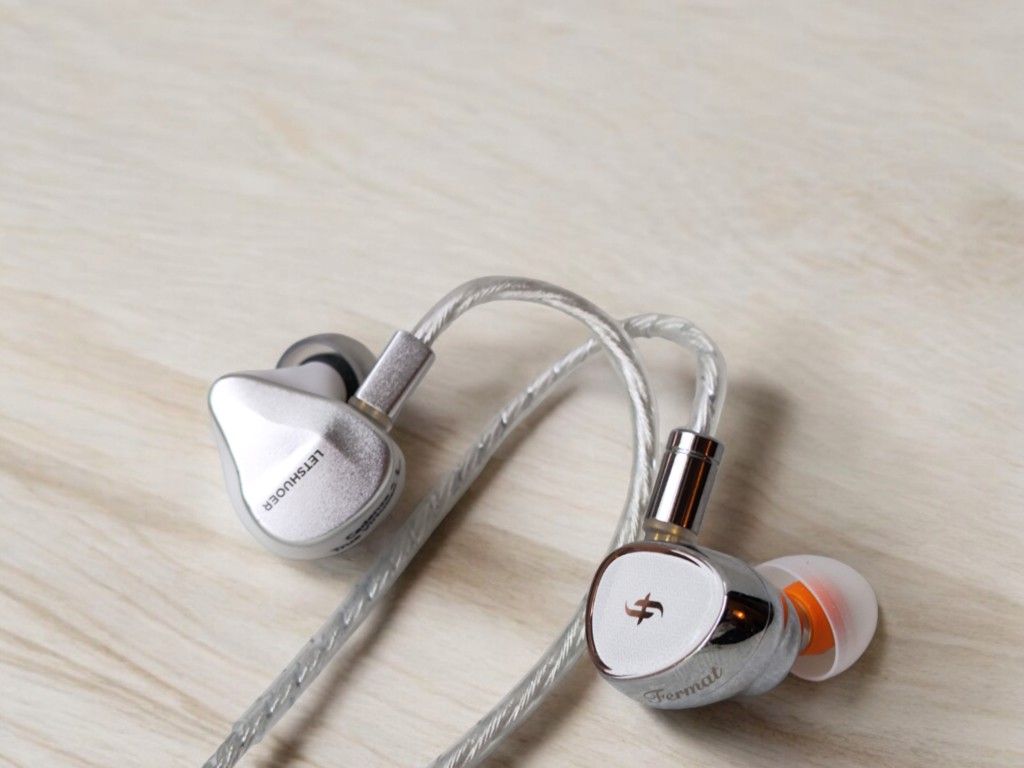
WRAPPING IT UP
Sound signature
As mentioned, EA1000 comes with three different nozzles that will affect the tuning. I have used the golden brass nozzles, which I found to be the “middle ground” of the three ah alternatives.
In my comparison, I find that Cadenza 4 and EA1000 are not very differently tuned, but there’s some significant differences: The EA1000 has consistently more bass presence. The midrange presence, on the other hand, depends more on the track; sometimes the EA1000 is more articulate, but most often the Cadenza has more midrange weight. The treble is slightly brighter and crisper with the EA1000.
Treble
Both have a nice organic-sounding treble. They are both high in detail. However, there’s a difference. The Cadenza 4 is rounder and less crisp. It’s not as articulate and daring as the EA1000. The Cadenza 4 plays it safer, never getting sibilant, while the EA1000, while still generally not being too bright or harsh, sometimes gets a bit hot.
Midrange
They both shine in the midrange and bring your attention to the vocals, guitars, strings, piano, etc., which are rendered deliciously. The Cadenza 4 has relatively speaking more midrange quantity. Again, however, I feel that the Cadenza 4 is playing it a bit safer.
Bass
In terms of quantity, the base is more different than the midrange and treble. The EA1000 has more bass presence. They do both deliver high-quality and extended base but once again, I feel that Cadenza 4 is more well-behaved. The EA1000 is a bit more lively.
With the CP145 tips on the Cadenza 4, the difference in base quantity is less prominent, but even with the CP145, the Cadenza often comes off as less bass-heavy than the EA1000.
Soundstage and Imaging
They both have a good soundstage. The EA1000 is often a bit more open-sounding.
Imaging is also very good on both; sometimes the EA1000 is better, sometimes the Cadenza 4.
Detail, Dynamics and Timbre
When it comes to the general level of detail, they are very similar. Sometimes one of them feels a bit more detailed; other times it is the other way around.
However, it seems that the Cadenza 4 is more consistent. The EA1000 sometimes has some resonance issues that really aren’t bothering me when listening to it by itself but become apparent in direct comparison. In that way Cadenza is cleaner. However, sometimes when it gets everything right, the EA1000 feels even more articulate and clear.
They are both very dynamic, but I find the EA1000 to generally to be even more dynamic. However, sometimes it gets less clean and sounds more fuzzy than the Cadenza 4 and the tables turn.
When it comes to tonality and timbre, they are quite similar, but the Cadenza 4 feels more rounded and controlled.
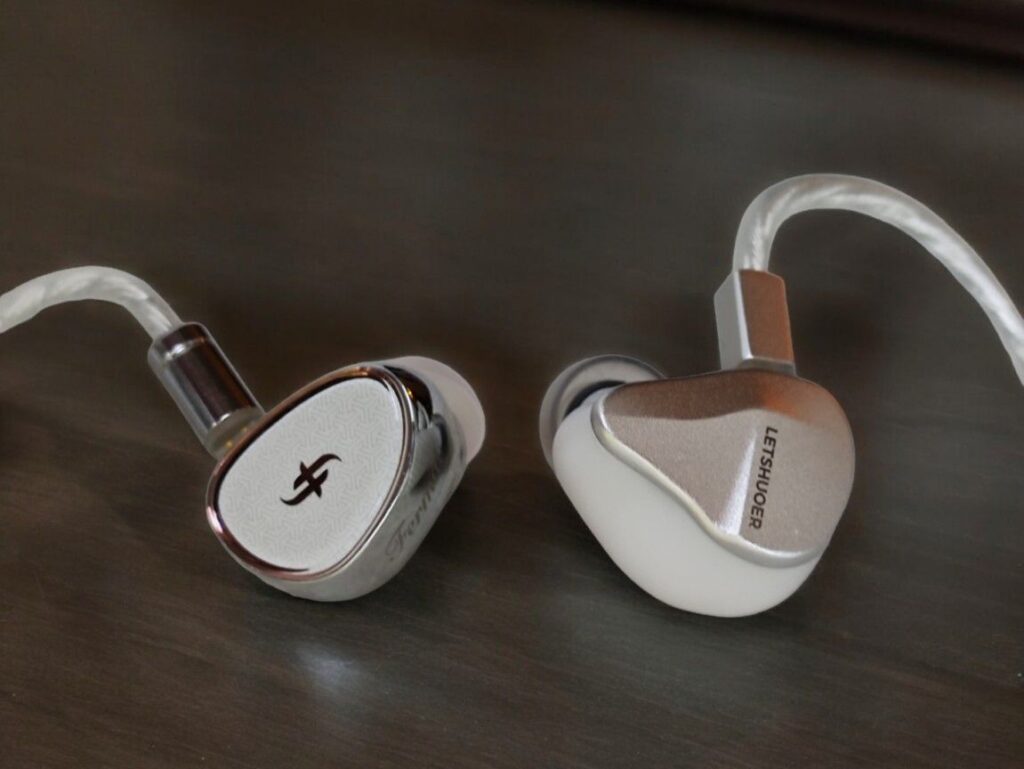
CONCLUSION
The Letshuoer Cadenza 4 and Simgot EA1000 are both terrific IEMs at their price point, and sound-wise, they have a lot in common. I do not have a clear preference. It varies from track to track, and I find them both to be excellent performers across genres and in all important aspects.
The EA1000 generally tends to sound even more airy and dynamic, but sometimes it is the other way around. The Cadenza 4 is very coherent and handles anything well. The EA1000 is more uneven in its performance. Mostly it is fabulous, but sometimes the sound gets a bit crowded and overly busy, especially in the mid-bass and lower midrange areas. It can also get a bit hot in the treble. This is not really something that bothers me on its own, but it gets very apparent in direct comparison.
All in all, these two IEMs are great alternatives. I find it difficult to recommend one over the other. I’d say the EA1000 is the most spicy, with a crisper treble and fuller bass, while the Cadenza 4 is playing things safer, not failing a step.
My Letshuoer Cadenza 4 review can be found here
My Simgot EA1000 review can be found here
You might purchase the Letshuoer Cadenza 4 here:
You might purchase the EA1000 here:
- Linsoul: Simgot EA1000
- Amazon: Simgot EA1000
Any purchase you make on Amazon or Linsoul with any of our affiliate links will give us a small provision at no cost to you.
We only get a provision for items that are not returned, so there’s no incentive for us to recommend something that’s not good.
Linsoul : Headphones, Earbuds, Wireless Earbuds, Desktop DAC/AMP, Portable DAC/AMP, Digital Audio Players,
Amazon: Headphones, IEMs, Headphone Amplifiers, Home Audio or Anything else.
.
If you enjoyed this article or other content on The Headphoneer, you might consider leaving a small donation to keep this website up and running. No donation is too small. Thanks for supporting us!
If you like our work please follow us on Instagram, Facebook and Twitter , it will help us grow. Sharing is caring 🙂


